
Ocala National Forest: Florida's Natural Oasis
Discover the natural beauty and diverse outdoor activities of Ocala National Forest, Florida's lush oasis and southernmost forest in the continental U.S.
Ocala National Forest, located in central Florida, is a lush expanse of natural beauty that offers a retreat from the hustle and bustle of city life. Covering nearly 387,000 acres, it is the southernmost forest in the continental United States and provides a diverse range of outdoor activities for nature lovers. The forest is home to hundreds of springs, lakes, and rivers, making it a perfect destination for water-based adventures such as kayaking, canoeing, and swimming. The forest's extensive network of trails is ideal for hiking, biking, and horseback riding. Wildlife enthusiasts will be delighted by the opportunity to spot various species of birds, deer, and even black bears in their natural habitats. For those interested in camping, Ocala National Forest offers numerous campgrounds, ranging from primitive sites to more developed areas with amenities. Ocala National Forest is also rich in history and culture. Visitors can explore ancient Timucuan Indian sites and learn about the area's past at local heritage centers. Whether you're looking to relax in the serene environment or embark on an adventurous outdoor journey, Ocala National Forest has something to offer for everyone.
Local tips in Ocala National Forest
- Visit during the cooler months (October to April) to avoid Florida's intense summer heat and humidity.
- Bring insect repellent, especially during the warmer months, as mosquitoes can be prevalent.
- Check the weather forecast and trail conditions before heading out, as some areas may be affected by seasonal changes.
- Pack plenty of water and snacks, as amenities can be sparse in the more remote areas of the forest.
- Consider renting a kayak or canoe to explore the crystal-clear springs and rivers.
Ocala National Forest: Florida's Natural Oasis
Ocala National Forest, located in central Florida, is a lush expanse of natural beauty that offers a retreat from the hustle and bustle of city life. Covering nearly 387,000 acres, it is the southernmost forest in the continental United States and provides a diverse range of outdoor activities for nature lovers. The forest is home to hundreds of springs, lakes, and rivers, making it a perfect destination for water-based adventures such as kayaking, canoeing, and swimming. The forest's extensive network of trails is ideal for hiking, biking, and horseback riding. Wildlife enthusiasts will be delighted by the opportunity to spot various species of birds, deer, and even black bears in their natural habitats. For those interested in camping, Ocala National Forest offers numerous campgrounds, ranging from primitive sites to more developed areas with amenities. Ocala National Forest is also rich in history and culture. Visitors can explore ancient Timucuan Indian sites and learn about the area's past at local heritage centers. Whether you're looking to relax in the serene environment or embark on an adventurous outdoor journey, Ocala National Forest has something to offer for everyone.
When is the best time to go to Ocala National Forest?
Iconic landmarks you can’t miss
Fort King National Historic Landmark
Explore the historical significance of Fort King National Historic Landmark, a serene park that brings Florida's past to life amid natural beauty.

Ocala Wildlife Management Area
Immerse yourself in the beauty of Ocala Wildlife Management Area, a nature lover's paradise in Florida with diverse ecosystems and outdoor activities.

Unmissable attractions to see
Silver Springs State Park
Experience the enchanting beauty of Silver Springs State Park, where crystal-clear waters meet lush landscapes, perfect for outdoor adventures and relaxation.

Rainbow Springs State Park
Explore the enchanting beauty of Rainbow Springs State Park in Dunnellon, Florida, a perfect blend of outdoor adventure and serene natural landscapes.

De León Springs State Park
Explore the enchanting De León Springs State Park, where nature meets adventure in Florida's stunning landscapes.
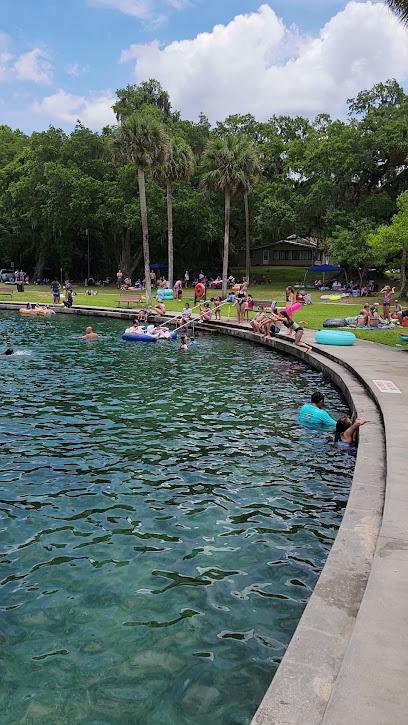
The Canyons Zip Line and Adventure Park
Discover the ultimate adventure at The Canyons Zip Line and Adventure Park, where zip lining meets the stunning beauty of Florida's landscapes.

Alexander Springs Recreation Area
Experience the natural beauty and tranquility of Alexander Springs Recreation Area in Florida - a perfect getaway for outdoor enthusiasts and families.

Florida Museum of Natural History-Exhibits
Discover Florida's natural wonders at the Florida Museum of Natural History, featuring interactive exhibits and captivating displays for all ages.

Tuscawilla Park
Explore Tuscawilla Park: A tranquil escape in Ocala, Florida, perfect for family picnics, leisurely walks, and enjoying nature's beauty.

Sholom Park
Explore the tranquil beauty of Sholom Park in Ocala, Florida, a perfect escape for nature lovers and families looking to unwind in serene surroundings.

Silver Glen Springs Recreation Area
Explore the crystal-clear waters and lush landscapes of Silver Glen Springs Recreation Area, a hidden gem for outdoor enthusiasts in Florida.
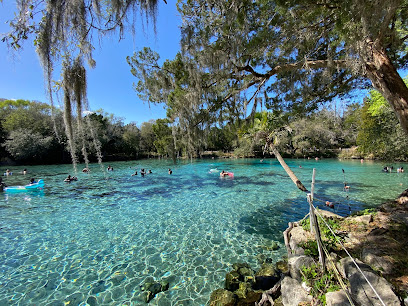
Fort King National Historic Landmark
Explore the historical significance of Fort King National Historic Landmark, a serene park offering insights into Florida's military heritage.

Scott Springs Park
Discover the tranquil beauty of Scott Springs Park in Ocala, Florida, where lush landscapes and peaceful waters create a perfect outdoor getaway.
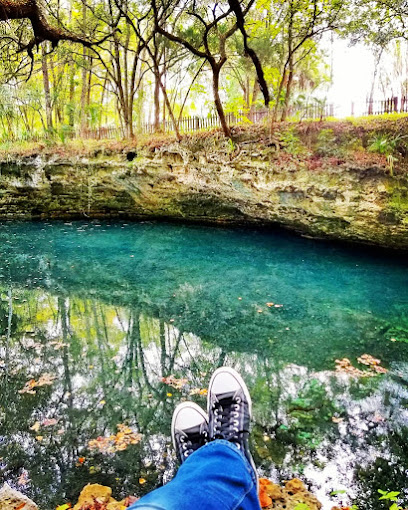
Silver River Museum & Environmental Education Center
Discover the Silver River Museum: A family-friendly destination showcasing Florida's rich history and ecological wonders through engaging exhibits and educational programs.

Brick City Adventure Park
Discover the family-friendly adventures of Brick City Adventure Park in Ocala, Florida, where outdoor fun and natural beauty await every visitor.

Discovery Center
Explore the engaging exhibits and hands-on activities at the Discovery Center in Ocala, Florida, where science comes to life for all ages.

Appleton Museum of Art
Explore the artistic wonders of the Appleton Museum of Art, featuring diverse collections and engaging exhibits in Ocala, Florida.

Essential places to dine
Eaton's Beach Sandbar & Grill
Experience delicious American cuisine at Eaton's Beach Sandbar & Grill with stunning lake views and vibrant beach activities.

Harry's Seafood,Bar & Grille
Discover delicious Cajun-inspired dishes at Harry's Seafood, Bar & Grille in Historic Downtown Ocala - A must-visit culinary destination.

Ocean Buffet
Experience the rich flavors of authentic Chinese cuisine at Ocean Buffet in Ocala—an endless buffet delight for every palate.

Cheddar's Scratch Kitchen
Experience the heart of Southern comfort food at Cheddar's Scratch Kitchen in Ocala – where every dish is made from scratch with love.
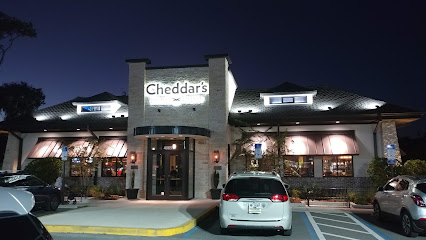
Gator Joe's Beach Bar & Grill
Experience Florida’s vibrant dining scene at Gator Joe’s Beach Bar & Grill—where great food meets stunning waterfront views.
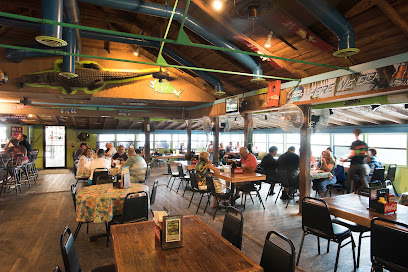
Mojo's-Food. Music. Soul. (Ocala Location)
Discover delicious soul food and Southern charm at Mojo's in Ocala – where every meal is infused with music and warmth.

Gator's Dockside Ocala
Experience the vibrant taste of American cuisine at Gator's Dockside Ocala - perfect for families and sports fans alike.

Terry's Place
Discover Terry's Place in Ocala – where great food meets fun entertainment in a welcoming atmosphere.
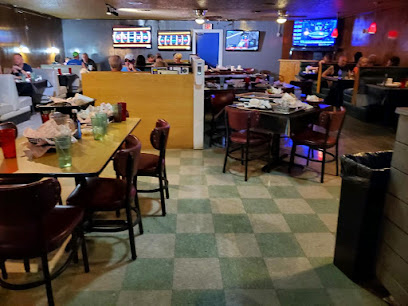
Ipanema Brazilian Steak House
Discover authentic Brazilian cuisine at Ipanema Brazilian Steak House in Ocala - A meat lover's paradise offering endless flavors.

Wolfy's Restaurant
Experience traditional American breakfast delights at Wolfy's Restaurant in Ocala - where every meal feels like home.

Amrit Palace
Savor authentic Indian cuisine at Amrit Palace in Ocala - where every dish tells a story of tradition and flavor.

Brick City Southern Kitchen
Experience the rich flavors of authentic Southern cuisine at Brick City Southern Kitchen in Ocala - where every meal is a celebration.

Brooklyn's Backyard
Experience delicious comfort food at Brooklyn's Backyard in Ocala - where local flavors meet American tradition.

First Watch
Discover First Watch in Ocala: Your go-to destination for fresh breakfast and brunch delights featuring health-conscious options.
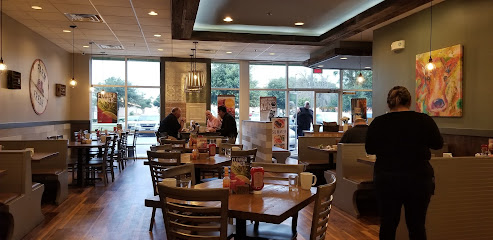
Ivy on the Square
Discover authentic Southern flavors and delightful cocktails at Ivy on the Square in historic Ocala.

Markets, malls and hidden boutiques
Paddock Mall
Discover Paddock Mall in Ocala, Florida: Your ultimate shopping destination with diverse stores, delicious dining, and exciting entertainment options.
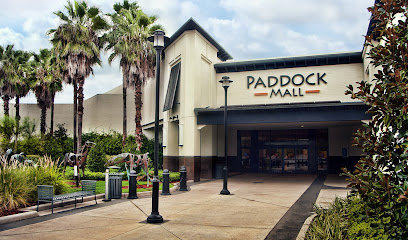
Gaitway Plaza
Explore Gaitway Plaza, Ocala's vibrant shopping mall with diverse stores, dining, and entertainment options, perfect for every visitor.
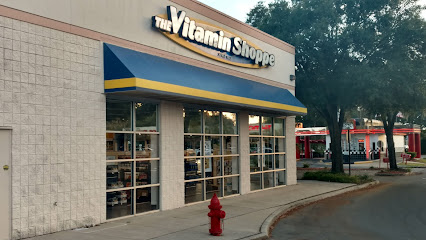
Market Street At Heath Brook
Explore the vibrant Market Street At Heath Brook in Ocala, Florida, your ultimate shopping destination with diverse retail and dining experiences.

Shady Oaks Shopping Center
Explore Shady Oaks Shopping Center in Ocala, a vibrant destination offering diverse shopping, dining, and entertainment experiences for all visitors.
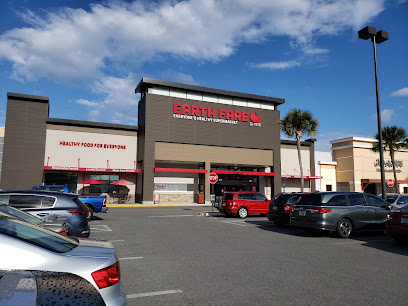
Kohl's
Explore the best of shopping at Kohl's in Ocala, Florida - where quality and affordability meet a diverse selection.

Michaels
Explore Michaels in Ocala for an extensive selection of craft supplies, art materials, and home decor, perfect for every creative endeavor.

SIX GUN PLAZA
Explore Six Gun Plaza, Ocala's premier shopping destination with over 200 shops and diverse dining options, perfect for every traveler.

Ross Dress for Less
Explore unbeatable fashion deals at Ross Dress for Less in Ocala, Florida - your destination for stylish clothing and accessories at budget-friendly prices.

Shoppes At Paddock Park
Experience the vibrant shopping and dining at Shoppes At Paddock Park, a premier mall in Ocala, Florida, perfect for tourists seeking unique finds.

Florida Citrus Center
Discover the essence of Florida at the Florida Citrus Center - a charming souvenir store filled with local treasures and citrus-themed delights.
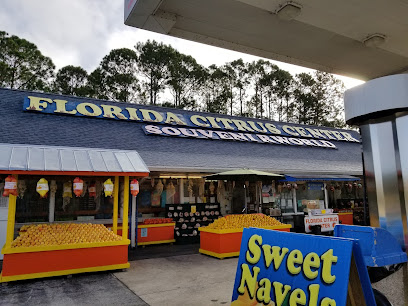
Bealls Florida
Experience the vibrant shopping scene at Bealls Florida, your go-to department store for stylish clothing and unique home goods in Ocala.

HomeGoods
Explore the joy of home decor shopping at HomeGoods, where unique finds and stylish pieces await at affordable prices.
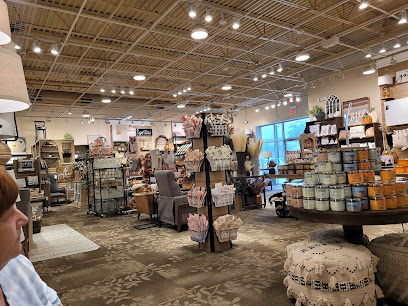
Shops at Foxwood
Discover a variety of shopping and dining experiences at the Shops at Foxwood, a vibrant mall in Ocala, Florida, perfect for tourists seeking retail therapy.

T.J. Maxx
Discover unbeatable deals on fashion and home goods at T.J. Maxx in Ocala, Florida, a must-visit destination for savvy shoppers.

Florida Citrus Center Inc
Explore the vibrant Florida Citrus Center Inc in Ocala, where unique gifts and local delicacies await every visitor looking for a taste of Florida.
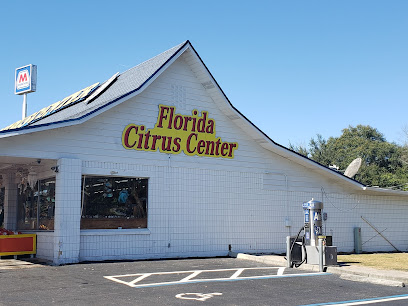
Essential bars & hidden hideouts
Harry's Seafood,Bar & Grille
Discover the vibrant flavors of Harry's Seafood, Bar & Grille in Historic Downtown Ocala, where fresh seafood meets a lively atmosphere.

Gator's Dockside Ocala
Discover the family-friendly charm of Gator's Dockside, a top American bar and grill in Ocala, Florida, offering a delicious menu and vibrant atmosphere.

Miller's Ale House
Experience the best of American cuisine and sports culture at Miller's Ale House in Ocala, Florida, where great food meets lively entertainment.

Brick City Southern Kitchen
Experience authentic Southern barbecue at Brick City Southern Kitchen, a culinary gem in Historic Downtown Ocala, Florida.
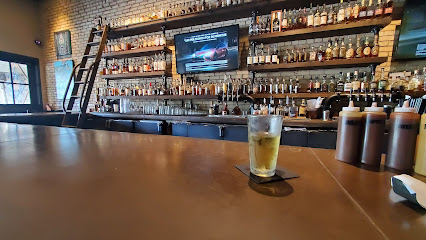
Charlie Horse
Discover the vibrant flavors of Charlie Horse, Ocala's premier grill serving up American classics in a warm and inviting atmosphere.

The Crazy Cucumber 352 Eatery and Bar
Experience the vibrant flavors of American cuisine at The Crazy Cucumber 352 Eatery and Bar, a must-visit gastropub in Ocala, Florida.

Flying Boat Tap Room LLC
Discover the essence of craft beer at Flying Boat Tap Room, Belleview's premier brewpub offering unique flavors and a vibrant atmosphere.
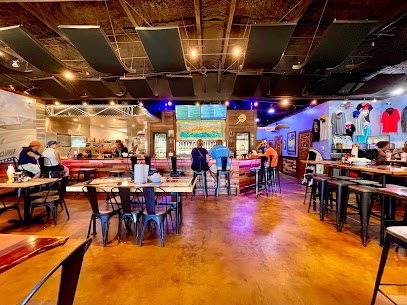
The Dugout Family Sports Bar & Grill
Experience the ultimate sports dining at The Dugout Family Sports Bar & Grill in Ocala, Florida, where great food and exciting games come together.

Bank Street Patio Bar
Discover the lively Bank Street Patio Bar in Ocala, where delicious food meets refreshing drinks in a vibrant outdoor setting.

O'Malleys Alley
Experience the vibrant atmosphere of O'Malleys Alley, a bar and restaurant in Historic Downtown Ocala, known for live music and a delightful menu.

Yellow Pony Pub and Garden
Discover the vibrant ambiance and delicious offerings at Yellow Pony Pub and Garden, Ocala's favorite spot for food, drinks, and fun!

O’Calahan’s Pub & Eatery
Experience the vibrant atmosphere and delicious cuisine at O’Calahan’s Pub & Eatery in Ocala, where every meal is a celebration of flavor.

100 Proof Saloon
Discover the lively flavors of Ocala at 100 Proof Saloon, your go-to destination for delicious grill fare and refreshing drinks.

Big Hammock Brewery & Bites
Experience the rich flavors of craft beer and delicious bites at Big Hammock Brewery & Bites in Historic Downtown Ocala, Florida.
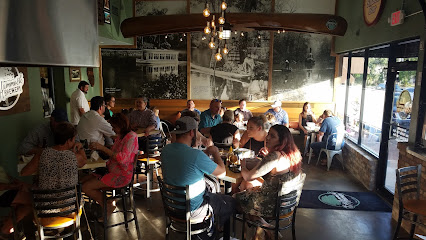
The Beach Ocala
Discover The Beach Ocala, where delicious grilled dishes meet a vibrant tropical atmosphere in the heart of Florida.

Local Phrases about Ocala National Forest
-
- HelloHowdy
[haw-dee] - GoodbyeSee ya later
[see ya lay-ter] - YesYup
[yuhp] - NoNah
[nah] - Please/You're welcomePlease/No problem
[please/no prob-lem] - Thank youThanks
[thanks] - Excuse me/SorryPardon me/My bad
[par-dun me/my bad] - How are you?How y'all doin'?
[how y'all do-in] - Fine. And you?Jus' fine. How 'bout you?
[jus fine. how 'bout yuh] - Do you speak English?Y'all speak English?
[y'all speak in-glish] - I don't understandI ain't gettin' it
[I ain't get-tin it]
- HelloHowdy
-
- I'd like to see the menu, pleaseCan I check out the menu, please
[can I check out the menu, please] - I don't eat meatI don't do meat
[I don't do meat] - Cheers!Bottoms up!
[bot-ums up] - I would like to pay, pleaseI'm ready to square up, please
[I'm ready to square up, please]
- I'd like to see the menu, pleaseCan I check out the menu, please
-
- Help!SOS!
[S-O-S] - Go away!Git!
[git] - Call the Police!Ring up the Sheriff!
[ring up the sheriff] - Call a doctor!Get a doc on the line!
[get a doc on the line] - I'm lostI done lost my way
[I done lost my way] - I'm illI ain't feelin' right
[I ain't feelin' right]
- Help!SOS!
-
- I'd like to buy...I'm fixin' to buy...
[I'm fix-in to buy] - I'm just lookingJus' browsin'
[jus brows-in] - How much is it?What's the damage?
[what's the dam-age] - That's too expensiveThat's a bit steep
[that's a bit steep] - Can you lower the price?Can you do better on the price?
[can you do bet-ter on the price]
- I'd like to buy...I'm fixin' to buy...
-
- What time is it?What's the time of day?
[what's the time of day] - It's one o'clockIt's one
[it's one] - Half past (10)Ten-thirty
[ten-thir-ty] - MorningMornin'
[morn-in] - AfternoonAfternoon
[after-noon] - EveningEvenin'
[even-in] - YesterdayYest'day
[yest'day] - TodayToday
[to-day] - TomorrowTomorra
[tom-or-ra] - 1One
[one] - 2Two
[two] - 3Three
[three] - 4Four
[four] - 5Five
[five] - 6Six
[six] - 7Seven
[seven] - 8Eight
[eight] - 9Nine
[nine] - 10Ten
[ten]
- What time is it?What's the time of day?
-
- Where's a/the...?Where's the...
[where's the] - What's the address?What's the addy?
[what's the add-y] - Can you show me (on the map)?Can you point it out (on the map)?
[can you point it out (on the map)] - When's the next (bus)?When's the next (bus)?
[when's the next (bus)] - A ticket (to ....)A ticket (to ....)
[A ticket (to ....)]
- Where's a/the...?Where's the...
History of Ocala National Forest
-
Long before European settlers arrived, the Ocala National Forest area was home to various indigenous cultures. Archaeological evidence, such as pottery shards and ancient tools, suggests that Native American tribes, including the Timucua, inhabited the region for thousands of years. These early inhabitants relied on the forest's abundant resources for hunting, fishing, and gathering.
-
In the early 16th century, Spanish explorers, including Juan Ponce de León, ventured into what is now Florida. While there are no specific records of them traversing the Ocala National Forest, their expeditions laid the groundwork for future European exploration and colonization. The Spanish influence is evident in some of the place names and historical narratives of the region.
-
The Ocala National Forest played a significant role during the Seminole Wars in the early 19th century. The dense forest and swamps provided refuge for the Seminole people as they resisted removal by the United States government. The forest's challenging terrain made it a strategic location for guerilla warfare, with numerous skirmishes and battles taking place in the area.
-
Established in 1908, Ocala National Forest is the oldest national forest east of the Mississippi River. The forest was created to protect the unique sand pine scrub ecosystem, one of the rarest habitats in the United States. The establishment of the forest marked a significant step in the conservation movement, aiming to preserve the area's natural beauty and biodiversity for future generations.
-
During the Great Depression in the 1930s, the Civilian Conservation Corps (CCC) played a crucial role in developing infrastructure within the Ocala National Forest. The CCC built roads, trails, and recreational facilities, many of which are still in use today. Their efforts not only provided employment but also enhanced the accessibility and enjoyment of the forest for visitors.
-
During World War II, parts of the Ocala National Forest were used for military training exercises. The forest's remote and rugged terrain served as an ideal location for preparing troops for combat. Remnants of old training camps and artifacts occasionally surface, serving as a reminder of the forest's contribution to the war effort.
-
Ocala National Forest holds cultural significance for local communities, including modern Native American tribes and long-standing Floridian families. The forest offers a wide range of recreational activities, from hiking and fishing to swimming in its numerous springs. Sites like Juniper Springs and Alexander Springs showcase the natural beauty and historical depth of the forest, attracting visitors from around the world.
Ocala National Forest Essentials
-
Ocala National Forest is located in Northern Florida, approximately 65 miles northwest of Orlando and 90 miles south of Jacksonville. The nearest major airport is Orlando International Airport (MCO), from which you can rent a car to drive to the forest. The drive takes about 1.5 hours. Alternatively, you can fly into Jacksonville International Airport (JAX) and drive approximately 2 hours to the forest. For those driving from other parts of Florida, Ocala National Forest is accessible via Interstate 75 and US Highway 40.
-
Within Ocala National Forest, having a car is essential for getting around, as public transportation is limited. Many visitors choose to rent a car from nearby cities such as Orlando or Jacksonville. The forest has numerous paved and unpaved roads, so a vehicle with good ground clearance is recommended. Bicycling and hiking are also popular ways to explore the forest, but be prepared for long distances and varying terrain.
-
The official currency in the United States is the US Dollar (USD). Credit and debit cards are widely accepted throughout the area, including in gas stations, restaurants, and convenience stores. However, it's advisable to carry some cash for entry fees, smaller establishments, and rural areas where card readers may not be available. ATMs can be found in nearby towns such as Ocala and Silver Springs.
-
Ocala National Forest is generally a safe destination for tourists, but it's important to take standard precautions. Avoid leaving valuables in your car and always lock your vehicle. Be cautious when hiking in remote areas and inform someone of your plans. While the forest itself is safe, nearby urban areas such as Ocala may have higher crime rates, particularly at night. It's best to avoid poorly lit areas and stay vigilant.
-
In case of an emergency, dial 911 for immediate assistance. The nearest hospitals are located in Ocala, including Ocala Regional Medical Center and AdventHealth Ocala. For minor injuries or health issues, there are urgent care centers in nearby towns. It's recommended to carry a basic first-aid kit and ensure your travel insurance covers medical emergencies. Rangers and local authorities in the forest can provide assistance and directions to the nearest medical facilities.
-
Fashion: Do wear comfortable, weather-appropriate clothing and sturdy footwear for hiking. Avoid wearing flip-flops or open-toed shoes in the forest. Religion: Do respect any religious or cultural sites you may visit, although the forest itself does not have prominent religious restrictions. Public Transport: Do be aware that public transport is limited; renting a car is the best option. Greetings: Do greet locals with a friendly 'hello' or nod. Southerners are known for their hospitality. Eating & Drinking: Do try local cuisine in nearby towns. Don't leave trash behind; always follow 'Leave No Trace' principles to keep the forest clean.
-
To experience Ocala National Forest like a local, visit some of the lesser-known springs such as Alexander Springs and Juniper Springs for a refreshing swim. Engage with park rangers who can provide insights on the best hiking trails and wildlife spotting opportunities. Don't miss the opportunity to canoe or kayak on the pristine waters of the Ocklawaha River. For a unique experience, try camping under the stars at one of the designated campgrounds.
Nearby Cities to Ocala National Forest
-
Things To Do in Gainesville
-
Things To Do in Daytona Beach
-
Things To Do in Orlando
-
Things To Do in St. Augustine
-
Things To Do in Jacksonville
-
Things To Do in Tampa
-
Things To Do in Clearwater
-
Things To Do in St. Petersburg
-
Things To Do in Sebring
-
Things To Do in Sarasota
-
Things To Do in Ft. Pierce
-
Things To Do in Stuart
-
Things To Do in Tallahassee
-
Things To Do in Fort Myers
-
Things To Do in Cape Coral













